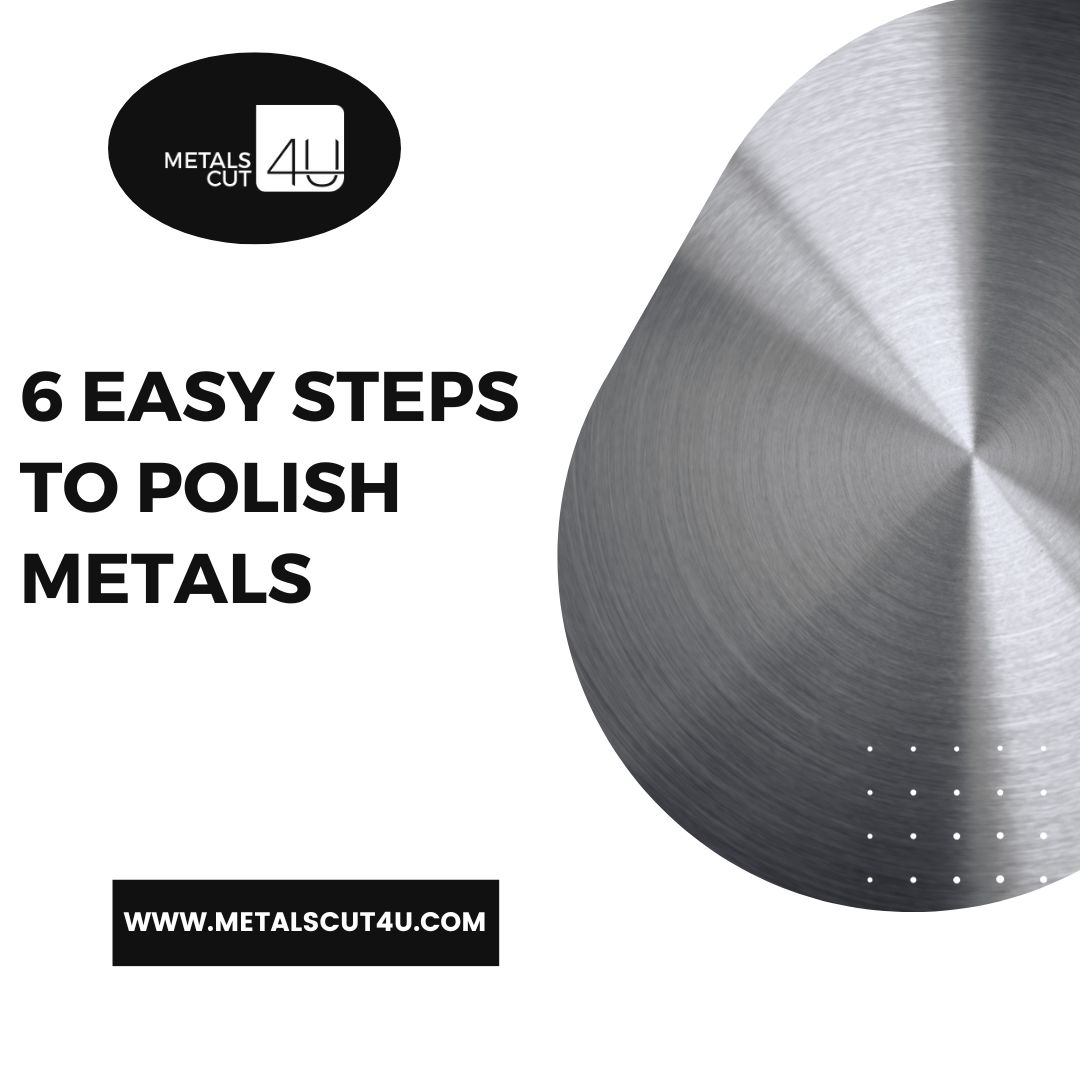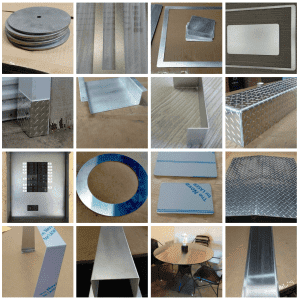How To Polish Metal

Metal surfaces possess a timeless shine and durability, but over time, they may lose their glow and sparkle. The art of metal polishing offers a way to restore and enhance the beauty of metal objects, from brass fixtures to stainless steel appliances. To achieve a mirror polish on metal requires the right techniques, tools, and a bit of patience.
In this guide, we will walk you through the steps of how to polish metal to turn your metal into a gleaming work of art.
Why Polish Metal?
Polishing metal isn't just about aesthetics; it serves as a protective measure and improves the material's functionality. These processes are essential for several important reasons:
-
Resistance to Oxidation and Chemical Corrosion
- Protective Sealant: Polishing stainless steel or any other metal is not just for shine; it provides a protective sealant-like function, acting as a strong defense mechanism to safeguard the metal's integrity.
- Preventing Oxidation: Metals often face the threat of oxidation, leading to rust formation. Polishing serves as a robust barrier against this process by creating a smooth surface that keeps oxygen and moisture away from metal, preventing rust and corrosion.
- Shielding Against Chemical Corrosion: Besides safeguarding against oxidation, mirror polished metal also acts as a reliable shield against chemical corrosion. When metals encounter various chemicals or corrosive substances, the polished layer prevents these agents from penetrating the material, ensuring the metal maintains its strength and doesn't deteriorate due to chemical exposure.
-
Easier Cleaning
- Smooth and Even Texture: Polishing imparts a smooth and uniform texture to the metal surface. This smoothness eliminates rough or irregular areas that can trap dirt and impurities, making it easier to wipe clean.
- Enhanced Efficiency: Dirt, grime, and contaminants find it more difficult to stick to polished surfaces due to the even texture. This resistance to sticking makes cleaning much more efficient, requiring less time and effort to keep the metal clean.
- Time-Saving and Hygienic: The ease of cleaning not only saves time but also contributes to maintaining a hygienic environment.
-
Increased Durability
- Wear Resistance: Metal polishing significantly improves the metal's ability to resist wear and tear by refining its surface during the polishing process.
- Resistance to Abrasion: Polishing adds a protective layer to the metal, reducing its vulnerability to abrasion. This safeguard means that even when the metal surface encounters friction, it's less likely to get damaged or wear out.
- Longevity in High-Use Environments: Polishing enhances durability, making it ideal for components in frequent use or harsh conditions. Whether it's industrial machinery, automotive parts, or tools, these polished metal surfaces can endure daily operation without wear and damage.
-
Aesthetics
- Enhanced Aesthetic Appeal: Mirror metal polishing doesn't just serve a functional purpose; it's equally important for enhancing its beauty. When metal surfaces are polished, they transform significantly, evolving from plain and unremarkable to pristine and captivating. This enhancement in aesthetic appeal is particularly remarkable, as it infuses a touch of sophistication into a wide range of metal objects.
- Versatility in Application: The magic of metal polishing is not limited to specific items. It can be applied to a diverse array of objects. Whether it's a decorative brass ornament gracing a living room, a mirror-polished stainless steel appliance for a modern kitchen, or a set of polished silverware for refined dining, polished metal is versatile and adaptable to a variety of appliances.
-
Restoring Vintage Items
- Preservation: Antique and vintage items carry rich historical and nostalgic significance. With time, these treasures can lose their shine and may deteriorate. Metal polishing can restore them to their original glory.
- Restoration of Value: Antique and vintage items often have substantial monetary value beyond their sentimental worth. Metal polishing not only renews their appearance but also restores their market value.
6 Easy Steps to Polish Metal
Step 1: Sanding
-
Check if the material needs sanding. If your fingernail can catch on a scratch, it requires sanding.
-
Start with coarse paper and work your way up to fine grit, following the material's grain.
-
Continue sanding until no scratches remain and you achieve a satin finish (usually around 1000 grit).
Step 2: Choose Polishing Tools
Select the appropriate polishing compound and buffing tool. Use a stiffer buff, like a felt bob, sisal buffing wheel, or specialty buff, and insert it into an electric drill or buffing machine. Refer to the jewelers' rouge and polishing compound chart for the right compound.
Step 3: Apply Polishing Compound
Lightly spin the buff against the polishing compound to coat it. Use the compound sparingly or in small quantities. Spin the coated buff onto the surface to be polished at 3,000 RPM or less. Apply slight pressure and let the buff do the work.
You'll see residue coming off (metal should produce black soot). Reapply compounds as needed, using a different buff for each compound if possible. If not, remove the previous compound by "raking" the buff.
Step 4: Repeat
Follow the chart to switch to the next finer polishing compound. Continue polishing until the scratches are gone, and you achieve the desired results.
Step 5: Final Polish
Once the mirror metal polishing is complete, it's crucial to clean and protect your newly restored surface. Start by washing the material with warm, soapy water to remove any remaining residue from the buffing compound.
After washing, dry the surface thoroughly using a soft cloth or a chamois to prevent water spots or streaks. Depending on the type of material you've polished, you also need to apply a clear protective coating to safeguard the freshly polished finish to extend its longevity.
Step 6: Clean and Protect
After finishing, wash the material with warm, soapy water to remove excess buffing compound. Dry with a soft cloth or chamois. Depending on the material, apply a clear coat to protect the restored finish.
What Tools Do I Need to Polish Metal?
To achieve a professional-grade shine, you'll need the right tools in your arsenal:
-
Safety Gears
When working with metal polishing, safety should always be your top priority. You must invest in appropriate safety equipment, such as gloves and eye protection. These items are necessary for protecting yourself from potential splashes and debris.
Gloves protect your hands from direct contact with metal polish, which can be abrasive or contain chemicals. Furthermore, eye protection safeguards your eyes against any potential splashes or particles that might be generated during the polishing process. Prioritizing safety offers not only a successful but also an injury-free metal polishing experience.
-
Metal Polish or Compound
Selecting the right metal polish or compound is crucial. Different metals have distinct characteristics, and the type of polish you choose should be appropriate for the specific metal you're working with. Each metal might require a particular formulation to achieve the best results.
-
Soft Cloths or Microfiber Towels
Soft cloth or microfiber towels are important for metal polishing. It's indispensable for applying the polish and buffing the metal to a high shine. Choose lint-free, high-quality clothes to prevent scratches or streaks on the metal surface.
-
Fine-Grit Sandpaper
If your metal has scratches or deep imperfections, fine-grit sandpaper can help smoothen the surface before polishing.
-
Polishing Wheel and Power Tool
If you're working on larger projects or are a professional seeking greater efficiency, a polishing wheel attached to a power tool can be an excellent addition to your toolkit. This tool can save time and effort while delivering a brilliant shine with less effort.
Conclusion
MetalsCut4U offers high-quality laser-cut sheet metal tailored to your precise needs. Our commitment to precision and durability ensures consistent, reliable performance across a wide range of metals. Whether your project involves aluminum, carbon steel, stainless steel, or any other metal, our focus is to deliver exceptional results.
Explore our diverse selection to discover the various types of metal for your upcoming projects today!
FAQs
How to Polish Brass to a Mirror Finish?
Brass, with its warm, golden glow, can be polished to a mirror-like shine. To achieve this, follow the general metal polishing steps. Pay special attention to using a brass-specific polish, as it's formulated to enhance brass's unique shine. You can also achieve that mirror finish using a soft cloth and a consistent circular motion technique.
How to Buff Stainless Steel?
Stainless steel is known for its sleek, modern appearance. To buff stainless steel to a stunning shine, ensure you choose a stainless steel polish. Clean the surface thoroughly, then apply the polish using a soft cloth. Buff in circular motions until you attain the desired results. It's highly durable and corrosion-resistant, making it an ideal choice for polished stainless steel.
